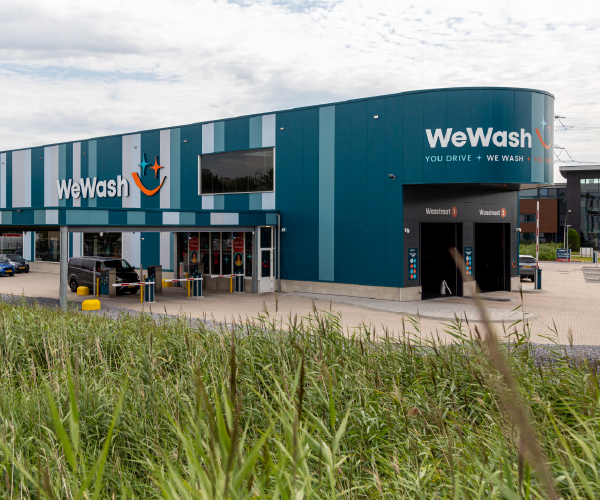
Consolidation and Culture
November 20, 2018
7 minute Read“Culture eats strategy for breakfast,” said Peter Drucker, the author and consultant known as the father of the modern business corporation. The same can be said of any consolidation, merger or acquisition. If overlooked and taken for granted, culture and people will eat any chance of financial success and synergy your integration may have generated as a snack, and your business for lunch.
A merger should not be seen only from a financial perspective, but from a human perspective as well. “If the people side isn’t working, it is going to be really hard to realize the full ROI you want from the merger,” said Lisa Sansom, change management consultant and owner of LVS Consulting. A company’s workforce is often considered its most important business asset.
Mergers introduced without proper investment in change management result in employee resistance, confusion and frustration, fear of insecurity, loss of competency, and lack of support. “Executive leaders need to realize a responsibility to change management and their people. If they are just doing the numbers, they are not doing their full job,” Sansom said.
A KPMG study found that 83 percent of merger deals fail, largely attributed to the improper handling of people and change management across the organizations. Examples of failed mergers and acquisitions due to a culture clash are not hard to find: Daimler/Chrysler was to be a “merger of equals” but ended in a cross-continental culture war best described as a fiasco.
AOL and Time Warner’s deal, valued at $350 billion, was the largest and most devastating merger in American history. Yet the colossal disappointment of the transaction could have been predicted or even prevented had more investment been made in the significance of company culture. Richard Parsons, president of Timer Warner later told the New York Times, “I remember saying at a vital board meeting where we approved this, that life was going to be different going forward because they’re very different cultures, but I have to tell you, I underestimated how different.”
Why is it that even with a plethora of case studies and cautionary tales, executives and management fall into the same pitfalls? What steps can a leadership team take to lead for positive change in an environment where consolidation is ramping up?
“You have to have faith and trust that the people you hire are going to do what you want. How you build that faith and trust is through coaching and culture. Create culture and coaching that people will follow,” said Brad Mann, president of The Wash Factory Car Wash.
A Family Business in Transition
Jimmy Kalamaras purchased Larmon Furniture from his father-in-law in 1992. Kalamaras and his wife were the third generation owners of Larmon furniture, started in 1931 in Tampa, Fla. When the economy floundered in 2007, Kalamaras was forced to take a hard look at what was best for his employees and family business. Under mounting financial pressure, he began conversations with Chris Kale, Sr., a longtime friend and fellow businessman in the Tampa area, about merging Larmon with Kale’s furniture business, Happy’s Home Centers. These conversations resulted in a 2013 consolidation.
Larmon Furniture was Tampa’s oldest furniture store, serving customers and the community for 82 years and boasting three generations of experience. Happy’s Home Centers was a fledging in comparison; it had been around three years and was managed by entrepreneurial college graduates Chris Kale Jr. and Jeff Kale, under the guidance uncle Rick Kale and Kale Sr.
The opposing cultures of Larmon Furniture and Happy’s Home Centers could have marked the merger for failure. But due to strong leadership and prioritization of employee welfare, a healthy transition was in place well before day one of the merger.
Start Early
Leadership and executive boards often spend months if not years going through due diligence and fact finding before a merger. Any anxieties or cynicism leadership may feel regarding the transaction is resolved by the time the plan is announced to employees. This can result in a lack of awareness and sensitivity on the part of management to the needs of employees. “When they announce the change, they are sending their employees back to the beginning of the change cycle. The leader often forgets that they went through that journey themselves and others need to go through that journey too,” Sansom said.
The solution is to start the conversations with employees early on and to seek out opportunities for the two businesses to collaborate well before the transaction takes place. “The longer runway you give yourself on mergers, the more successful your transaction will be from a culture point of view, which tends to translate into better financial outcomes,” Sansom said.
Larmon Furniture and Happy’s Home Centers employees were given ample opportunity to learn and work with each other before their merger. Management at Happy’s provided Larmon Furniture technical support and helped transition the business structure from financing to a lease to own concept. Kalamaras and Kale Sr. went together to purchase inventory and developed a common understanding of what worked well. “We definitely had a relationship together prior to joining with Happy’s,” Kalamaras said.
Resolve Cultural Differences
Before day one of the transaction, it is important to discuss differences in approaches and expectations for employees between businesses and employ a unified approach throughout the organization. “Deliberately talk about culture. Have people involved in discussing what this new organization is going to look like and how they are going to interact with it,” Sansom said.
When Larmon Furniture and Happy’s Home Centers merged, a transition was put in place to unify policies and procedures throughout all five store locations. Larmon Furniture was a family owned store and operated efficiently without strict written guidelines; long-time employees knew how to tow the line and individuals could be mentored and corrected on a personal basis if needed. Happy’s Home Centers’ culture had a more corporate leaning, with five locations and an outlook for growth. “We didn’t have written guidelines before, but once you’re part of a larger organization, having company-wide policies across the stores helped keep everything in order,” Kalamaras said. The transition was initially a challenge for some Larmon employees but the adjustment was eventually made and resulted in a stronger organization. “We keep a tight ship in terms of personnel,” Kalamaras said.
The Wash Factory has four locations currently open in north Texas with plans to open another in 2018 and two more in 2019. The same strategy comes in to play when you are adding new locations to an existing organization as when you are merging businesses. As Mann adds on car washes, careful attention must be given to creating a unified company culture that will result in a consistent brand and experience for customers. “We keep the same equipment, use same point of sale system, wear the same uniform, so the customer can have the same experience. I think if you are trying to build a brand and trying to grow, you definitely need the same look and feel at every location,” Mann said.
The Wash Factory also utilizes formalized company policies to create consistency across locations and a common culture. Along with staffing an HR Director and implementing an employee handbook, The Wash Factory uses a tablet program that provides an automated list to employees of all opening and closing duties. “Every single employee knows what they are doing every single day and every single shift. We have automated all the schedules and processes and it is the same for every location that we have,” Mann said.
Invest in Dialogue from the Top Down
The momentum and positive change created within the leadership teams of the organizations needs to cascade through the entire organization during a merger. Success relies upon creating buy-in through personal interactions, not one-way communications. “There is a temptation for the executive to tell the manager to tell the employees and hope it will trickle down, but there is huge power in the VPs actually going out and talking directly with the managers and employees,” Sansom said.
Leadership should be the sponsors and face of the change and as visible as possible. Face-to-face interactions should be prioritized whenever possible and Town Halls and Q&As should be made available to employees from leadership. Open communication benefits all parties. “Employees are hearing the news from a trusted source and executive leadership can get the pulse of what’s going on on the ground,” Sansom said.
Kalamaras kept his ear to the ground as Larmon Furniture merged with Happy’s and held a constant open dialogue with the loyal Larmon employees and customers that made the transition. As a result, Kalamaras was kept abreast of any challenges and concerns brought about by the merger and was able to address them in a proactive manner.
Mann keeps an open-door policy with his management team and the regional managers hold frequent face-to-face meetings with location employees to find out what is working well and what needs attention. Mann also invests in building the authority and autonomy of his leadership team. “I spend a lot of time coaching my managers to take authority. Build credibility with your employees and customers. I want them to understand their authority and how to handle any situation that may come up. They have complete control over their car wash locations,” Mann said.
An up-front investment in change management and human capital will deliver significant returns. Employee engagement and satisfaction will be minimally impacted or even increase, planned synergies will be realized, and a new and more successful organization will be formed.








